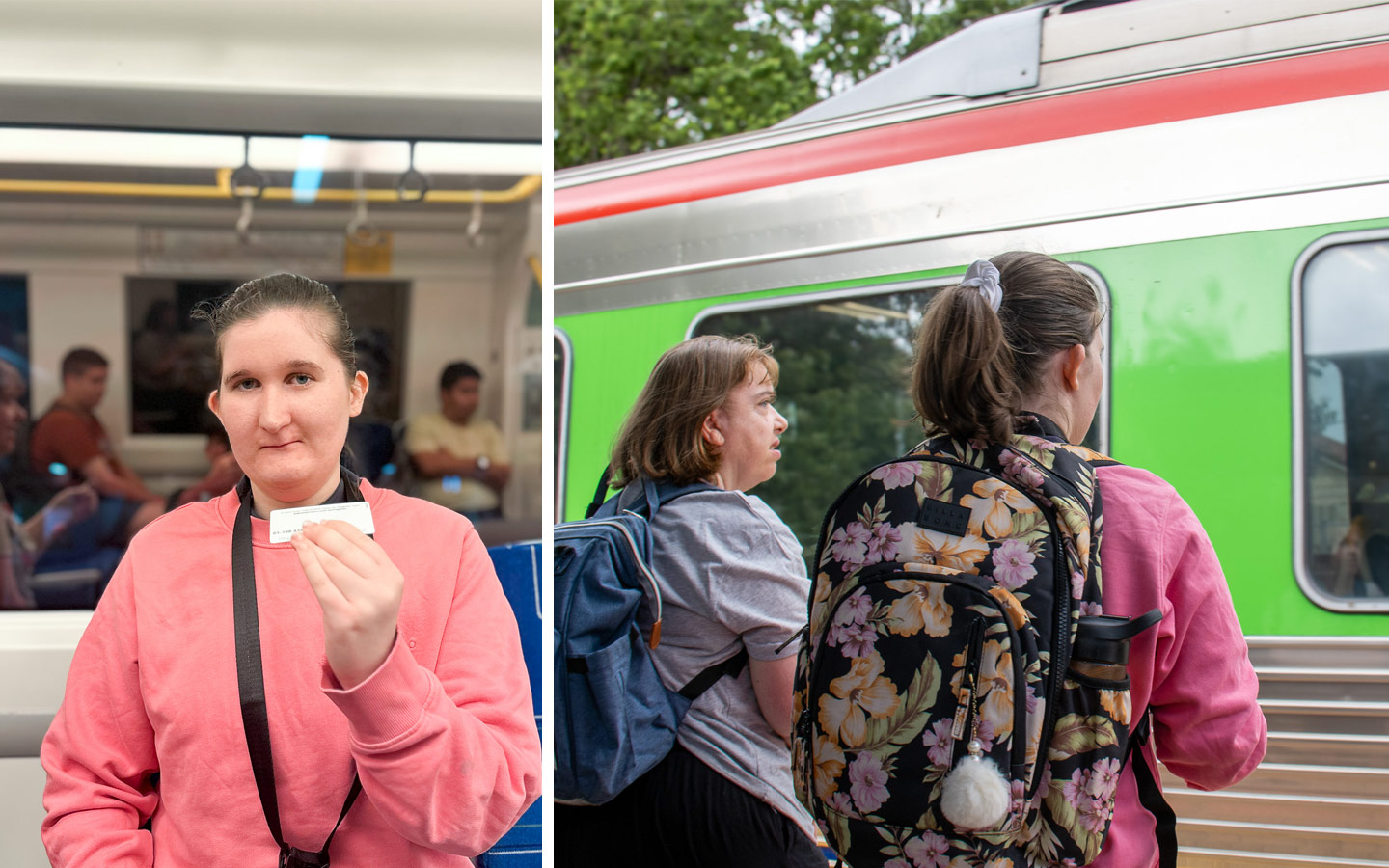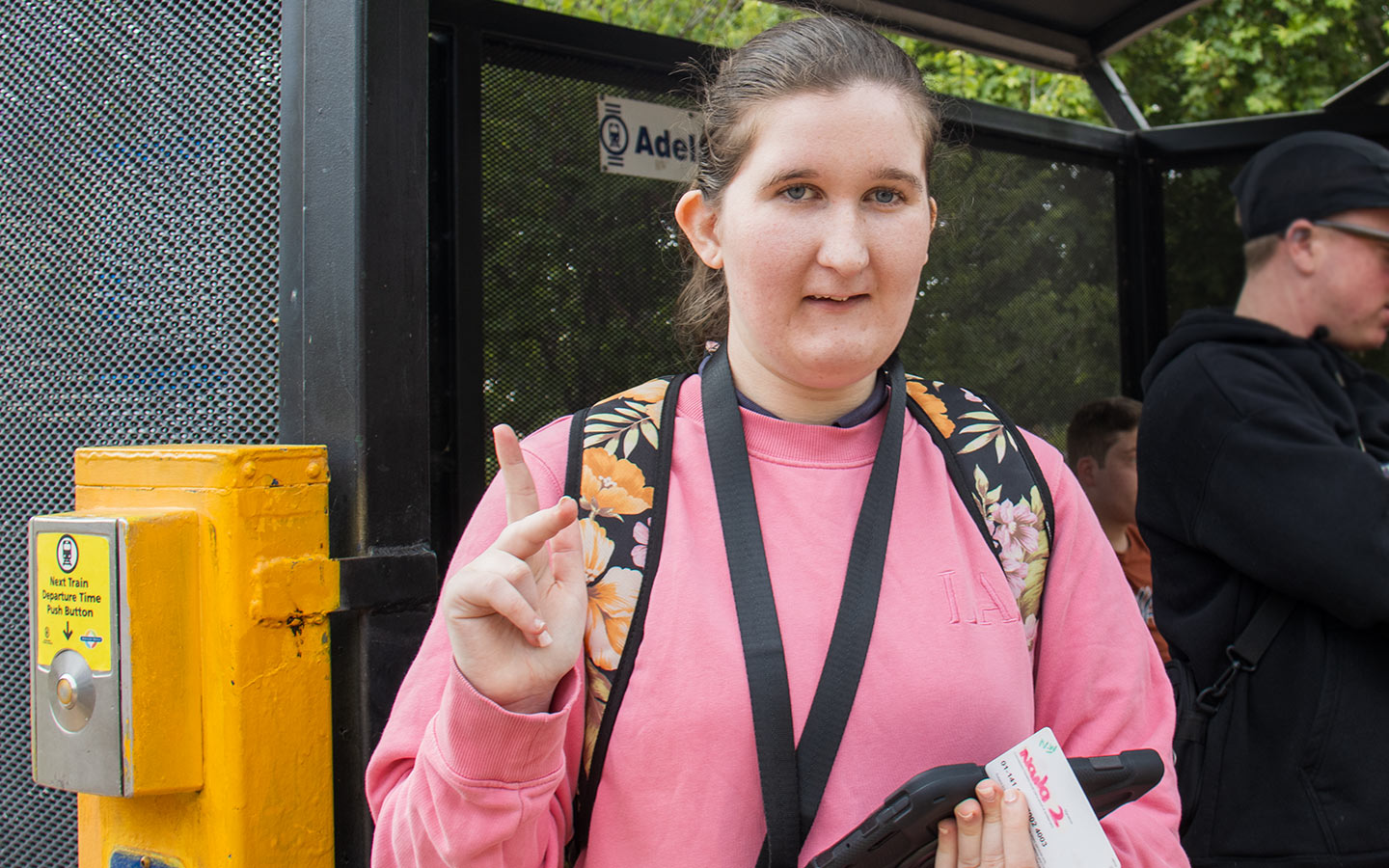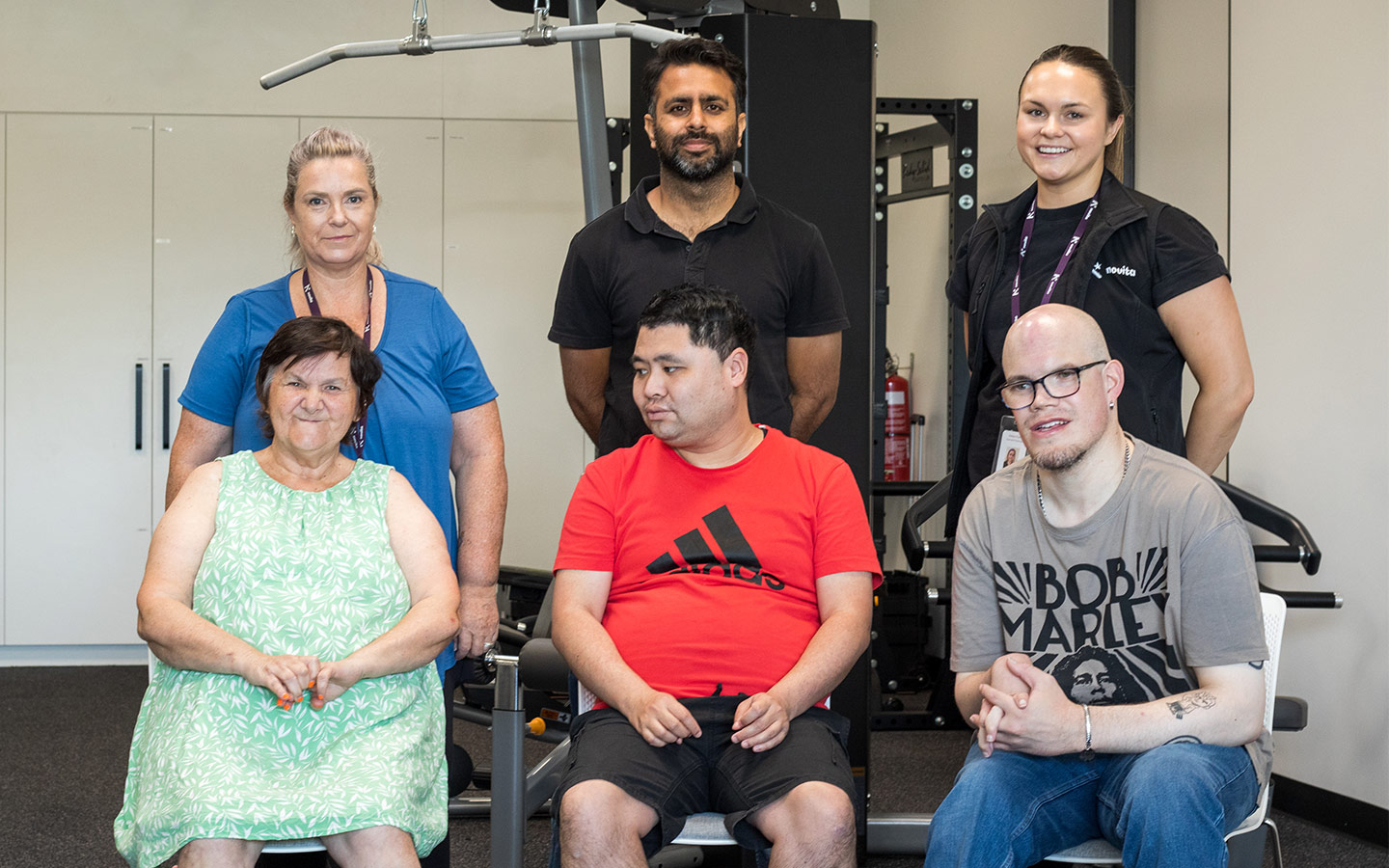Helpful Information
Tips for using public transport if you live with physical disability
access_time20min read

Do you have your ticket ready? Safely accessing public transport like the bus or train is an important aspect of living independently and connecting with the community. Public transport allows you to go shopping, meet friends, access essential services including healthcare, and go to work without relying on other people. Public transport is also an affordable and practical option for people who may not have access to private vehicles like Uber or taxis.
We’ve designed this article with our Senior Support Workers to give a ‘crash course’ in all things public transport; it serves as a guide to getting started. From buying a ticket, planning your route, communication, and how to use accessible features on public transport, we’ve covered everything you need to know about taking public transport.

Before we start, here are some benefits of using public transport:
Affordability – by choosing to travel by public transport, people can save a lot of money by not taking Uber or taxis.
Independence – using public transport provides a sense of independence. Novita client, Taylah (pictured above), said she enjoyed taking public transport because it allowed her to participate in activities that she enjoys away from home.
Improved mental health – Taylah also mentioned that traveling via public transport created a sense of routine, built her confidence, and had an overall positive effect on her mental health. Traveling to and from seeing friends and engaging in activities she enjoyed allowed her to feel a sense of belonging within the community.
Improved physical health – Taking public transport keeps you active since you need to walk to stops and destinations. Plus, being outside helps you get extra sunshine!
Here are some challenges people with disability might face when travelling via public transport:
Although there are many benefits to traveling via public transport, people with disability can face some challenges, especially with issues of accessibility and communication.
Accessibility – although most modern buses have accessible features, including ramps and disabled seating, some older models may not.
Communicating when you need help – sometimes, communicating when you need help is hard, especially if people around you aren’t aware of your disability.
Interruptions and delays – interruptions and delays are an inevitable part of traveling via public transport. When you are used to a routine, it can be difficult to experience a significant unplanned change.
Seven top tips for using public transport when you have a disability
Although there can be some challenges when using public transport, remember that you can easily prepare for these and ensure that you feel confident and prepared when traveling.
Below, we have provided some useful tips and tricks to prepare when taking the bus, train, tram or any other form of public transport.
Tip one: Check to see if you’re eligible for a concession pass
People with disability can apply for concession cards offering free travel on public transport. These concession cards include a vision impairment travel card, PLUS ONE free companion card and mobility pass.
Vision impairment travel card:
People with vision impairment can apply for a vision impairment card when travelling on public transport. To prove they are eligible for this concession, they must have an assessment from a medical professional. The assessment must determine that you are legally blind in both eyes.
You can apply for a vision impairment travel card here.
PLUS ONE companion card:
A PLUS ONE companion card is offered to people caring for someone with disability. To be eligible for a PLUS ONE companion card, you must be:
- 18 years of age,
- Have known the person you’re supporting for at least 12 months,
- Not related to the person you’re supporting by birth or marriage,
- Not in a relationship with the person you’re supporting,
- And do not live with the person you’re supporting.
You can apply for a PLUS ONE companion card here.
Mobility pass:
A mobility pass is a printed and laminated card that people can show the driver when they enter any public transport vehicle and provides users with free travel across all of Adelaide Metro. The mobility pass is offered to people who have significant physical and cognitive impairments (i.e., an acquired brain injury or dementia). To be eligible for a mobility pass, you must provide a current assessment from a medical professional and add supporting documents, including medical records and a current diagnosis, onto your application.
You can apply for a mobility pass here.
Tip two: Researching accessibility options and features
Before considering using public transport as your main travel option, you might like to explore the different accessibility features onboard. In South Australia, all public transport options offer:
- Allowances for assistance dogs to support you throughout your journey
- Ramps, fitted at the front of each train car, provide wheelchair access, and drivers can extend them further if needed. Passengers in wheelchairs should wait to board at the front end of the train.
- Designated spaces for people with disability (these are usually in the middle of the bus)
Tip three: Practice your trip
If you’re going to be using public transport regularly, it’s a good idea to have a few practice sessions with a family member, carer, support worker, or therapist. You can research routes on applications like Google Maps, Apple Maps, and on the Adelaide Metro website.
Tip four: Avoid peak-hour traffic
Traveling at peak hours can sometimes be more difficult. One option is to avoid busy times until you feel comfortable and confident with your public transport routine.
Peak hour traffic hours usually fall at the start and end of the school and workday when people are traveling to and from home.
- Morning hours typically include: 7:00am – 9:30am
- Night hours typically include: 5:00pm – 7:30pm
Tip five: Make sure you pack your essentials
Before traveling, make sure you are prepared for your journey. Items to pack could include:
- Your wallet (including your ID, Metrocard, and concession card)
- Your phone (with all relevant numbers: friends, family, and emergency contacts saved)
- Portable charger if you’re traveling a long distance (some buses have USB ports for charging)
- Sensory toys and accessories
- A drink bottle
Tip six: Talk to the driver if you’re feeling uncomfortable or concerned
If you’re taking the bus, drivers appreciate it when people communicate with them when they get on board so that they can clarify any travel issues and have plenty of time for preparation. For example, you can let the driver know the stop you want to get off at so they can assist you with the ramp or any other needs.
Tip seven: Reduce sensory anxiety when you’re on-board
Stations, stops, interchanges, and public transport can all cause sensory interruptions. If the excessive noise, visual input, or movement is uncomfortable, it might be worth doing something settling before using public transport. For example, meditation or doing some breathing exercises. Those sensitive to noise might like to wear headphones to cancel outside noise. Some of our clients have found chewing gum a good way of settling their nerves, while others find fidget toys calming.
How the Novita team can help
Public transport offers many benefits, including being an affordable option to travel, increased independence and confidence. However, before you start using public transport, it’s important to be aware of the potential challenges and remember to plan ahead. By understanding accessibility features, practising routines and using helpful strategies like packing essentials and communicating with drivers, people with disability can travel with greater confidence and ease. With the right preparation and planning, public transport can be a great way to stay connected with the community.
Want to get started using public transport, gain independence and work towards your personal goals?
Our Transition to Work and Step Up life skills programs empower young people with important skills like travel, ensuring they can navigate public transport – and even work toward getting their driver’s license – with confidence. Novita also offers individualised support for clients, offering clients the opportunity to work on their goals, including how to take public transport and to be more independent. Want to get started on your journey? Contact us today.


